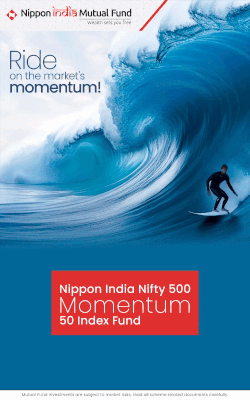Listen to this article
It was back in 1993 when Warren Buffet wrote a letter to Berkshire Hathaway shareholders stating - “By periodically investing in an index fund, for example, the know-nothing investor can actually out-perform most investment professionals. Paradoxically, when ‘dumb’ money acknowledges its limitations, it ceases to be dumb.”
Warren’s statement over 30 years back was a stark prediction of today’s landscape regarding passive funds in India and worldwide. Here’s a look at how passive funds are performing across the world.
India
According to the ‘Baroda BNP Paribas Annual Outlook 2024’ report, passive funds in India did not have a single net outflow month in the last twelve months.
Currently, the share of passive funds in the total MF AUM stands at an impressive 17.5% as of March 2024.
AMFI data shows that the AUM of passive funds has increased from Rs.6.67 lakh crore in March 2023 to Rs.9.22 lakh crore in March 2024, an increase of 38% over the year.
USA
Morningstar reported that passive funds ended 2023 with $1.3 trillion (Rs 1.08 crore crore) in the USA. The total difference between active and passive funds in the USA was $590 billion (Rs 49.20 lakh crore) with passive funds taking the lead.
The US passive funds primarily track market indexes such as the S&P 500, Dow Jones Industrial Average and Nasdaq Composite.
Europe & UK
Morningstar data reveals that as of December 31, 2023, 26.7% of total assets under management in Europe were attributed to passive funds. The AUM of passive funds in Europe ended 2023 was €80.31 billion (Rs 7.18 lakh crore).
The report reveals that three out of the top five fund inflows in the UK were passive namely - iShares ESG Overseas Corp Bd Idx Fd (UK), iShares North American Eq Idx Fd (UK), and iShares UK Equity Index Fund (UK)
China
A major shift was witnessed in the passive market in China last year.
According to a report by Bloomberg, the Chinese passives market grew to a solid $238 billion (Rs 19.84 lakh crore) last year. Chinese ETFs enjoyed record inflows in 2023. ETF inflows reached $77.4 billion (Rs. 6.45 lakh crore) with 161 new funds launched. On the other hand, the active funds market saw its lowest fundraising levels in a decade, showing a definite move towards passive from active.
In conclusion, the global shift towards passive funds is evident as witnessed by their increasing dominance across key markets like the USA, Europe, and China.
Passive funds have not only gained traction but managed to outperform actively managed funds in some markets. It is evident that passive funds are poised to play an increasingly significant role in shaping the future of global investment strategies.
Considering the growing popularity of passive funds, Cafemutual will host Cafemutual Passives conference on May 10 at Taj Santacruz, Mumbai.
Themed ‘Time to take an active look’, the conference has an exciting line-up of over 20 esteemed speakers who will help you identify and understand the latest trends in the passives category.
Click here to register for the event and avail the early bird offer.






